
In what sort of situation would it ever make sense to can water ahead of an emergency or an inclement situation? There’s a little clue for you there. It all boils down to this: the survival rule of threes.
- You can survive for 3 minutes without air (oxygen). Most people can survive for 3 minutes in icy water. If you are anything like Wim Hof, you can definitely survive for much longer, even in an ice bath – it does take some training though.
- You can survive 3 hours in a harsh environment such as extreme heat or cold.
- You can survive 3 days without drinking water.
- You can survive 3 weeks without food, provided you have access to clean water and shelter.
Isn’t it ironic that experts tell you to have enough water, food and other supplies for 3 days? Nope, not at all.
Not that you want to be dropped in a survival situation…
And here comes the but. Sometimes bad things happen to good people. Your mind might jump straight away to storms and natural disasters, yet nature isn’t the only one to blame. Sometimes people are too.
What if the water flowing through your tap was unsafe and undrinkable? It happened before in Flint, Michigan, that the water became contaminated with lead due to careless decisions. Think it can’t happen where you live?
Have you ever gone to the store to stock up before the storm/hurricane/tornado broke out and found they were out of your favorite “brand” of water?
What if your pipes are leaking, you don’t know how to fix them, or no one is available to come to your aid in a reasonable amount of time.
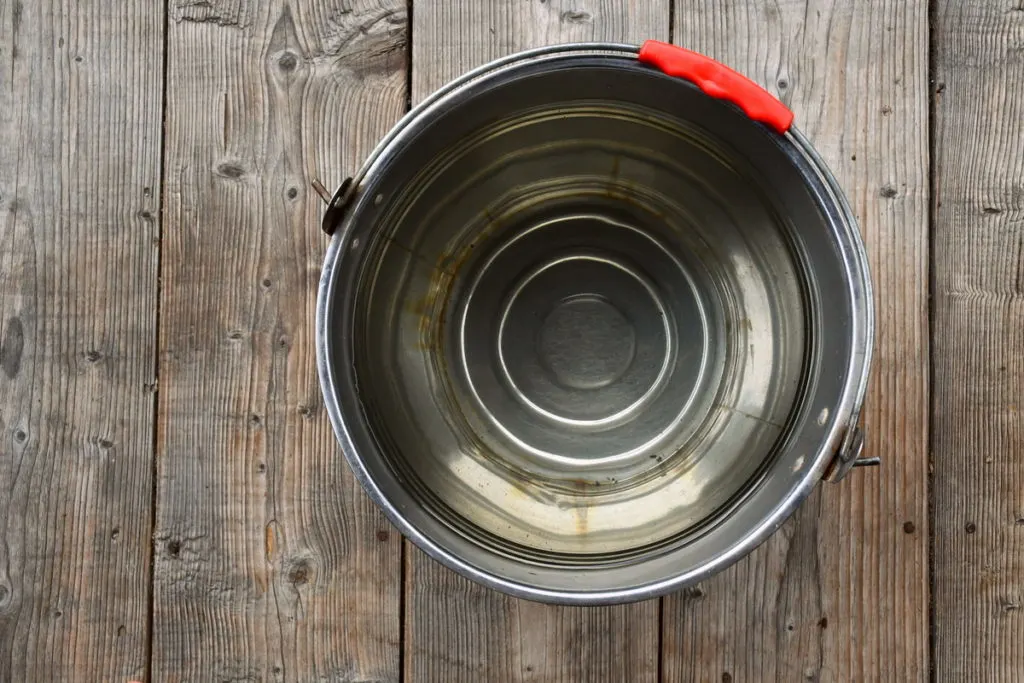
How about if the water just isn’t flowing at all?
If you’ve been reading Rural Sprout long enough, you may have noticed at some point that I chose to homestead in rural Romania.
In our traditional wooden home, now 83 years old, we’ve opted not to install running water (saves a lot of pain with freezing pipes in winter). We also live without a fridge or freezer, something you may personally find difficult to live without.
To bring the water in, we go outside with a bucket each morning to fetch it from the underground pipe that originates much further up the mountainside.
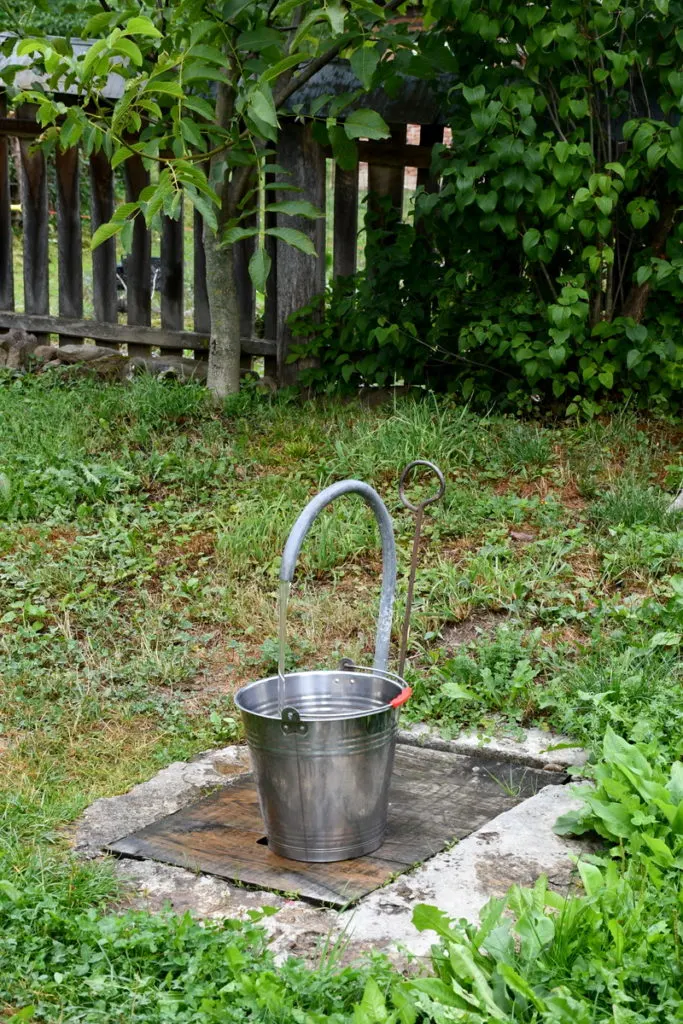
would you give more thought about how much you use and where it ultimately goes?
For the most part, the water is of fine drinking quality. In winter it is the cleanest.
Some days, particularly in summer, when the levels get low and the many tourists overwhelm the system, the water is littered with sediment, leaf bits and crayfish. The latter can be dead or alive.
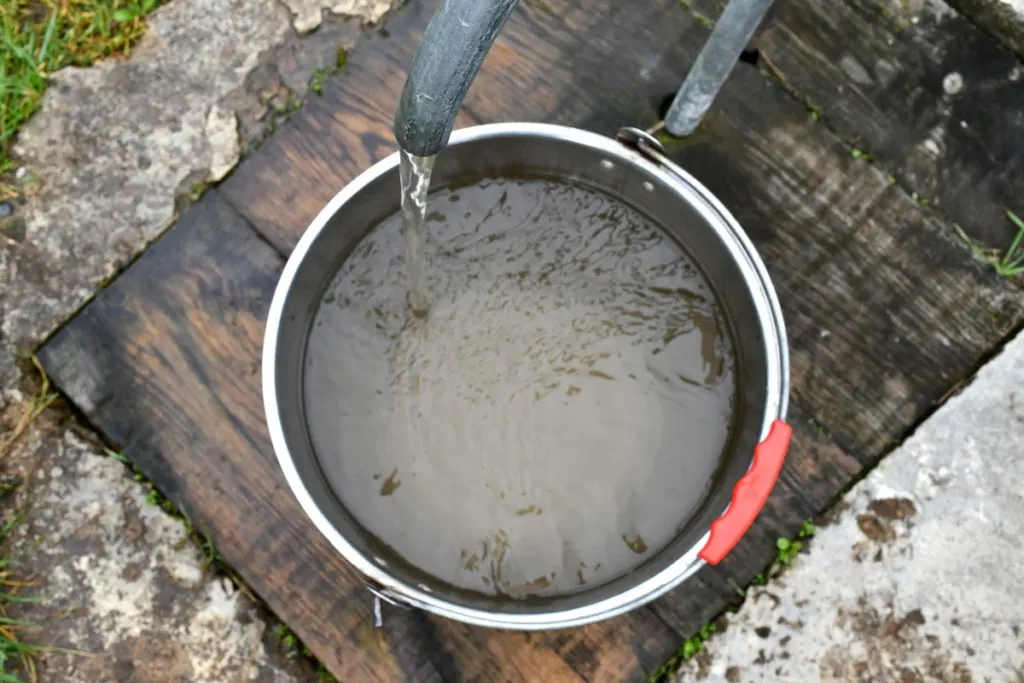
So, let’s just say the water is living.
Everyone drinks it, from humans to cats, dogs, horses, cows, chickens, pigs and more.
The ducks, somehow prefer puddles and manure piles. Don’t bother quacking to them about what’s healthy or not.
While people talk about the fantastic benefits of eating raw food, consuming nutrient-rich creek water isn’t exactly what they are thinking about.
Boiling water is one way to ensure that the water is safe from bacteria. However, if you’ve done this before, you’ll often find that boiled water doesn’t taste as great. The absence of air gives it a flat taste, even if it is safer to drink.
Filtering is another way to clean your water before drinking or cooking with it.
3 Days Without Water?
Thank you, no. I’ll pass.
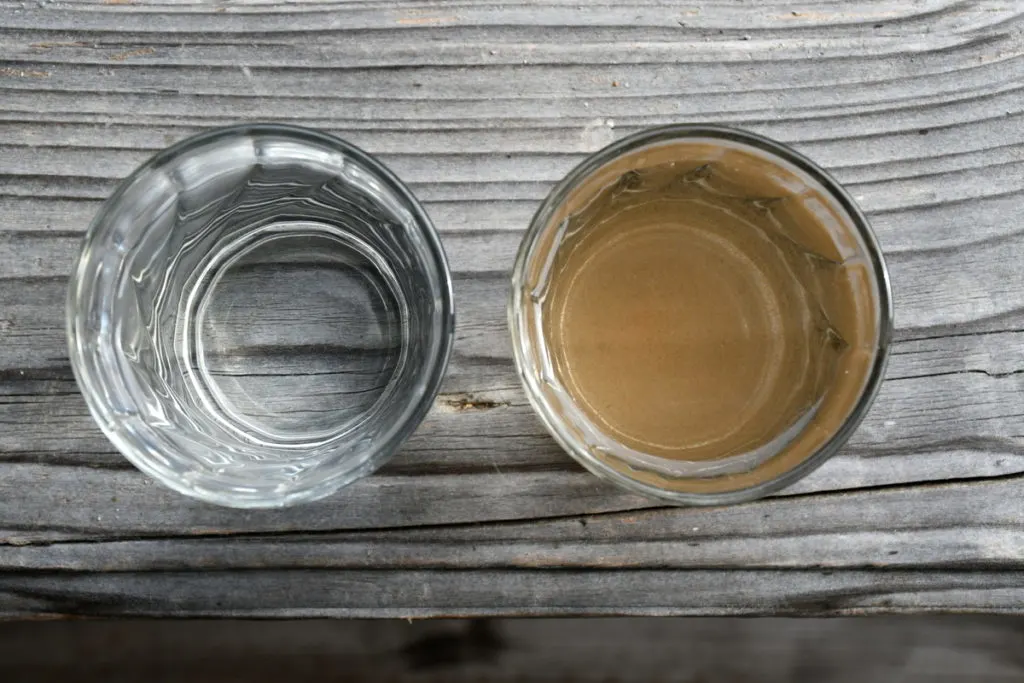
Clean drinking water is essential to our survival, yet not enough people imagine clearly where the water is coming from. Even fewer seem to care where it goes. That’s a topic for another time and place.
It’s good to be reminded every once in a while, that self-reliance is a wonderful attribute to have, especially when emergencies occur.
Don’t fall into the line of thinking that water will always be available at the store. What if the store is closed when you need it the most? No money? Big problems.
Very simply put, being prepared can save your life.
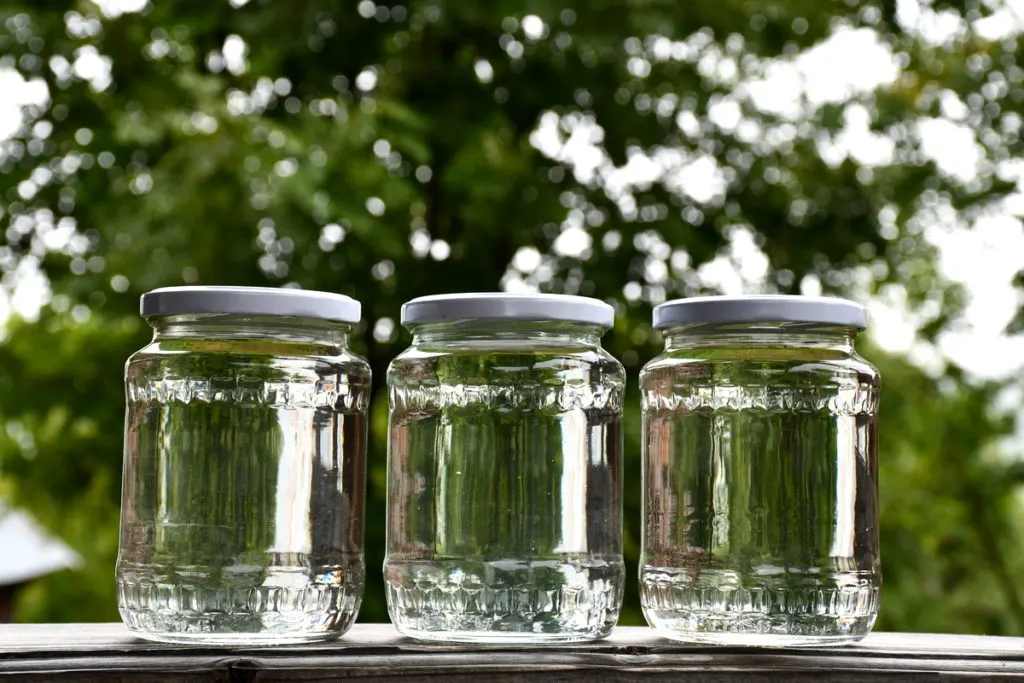
It may seem like a waste to have some cans of water filling a shelf, but ask yourself: do I even know how much water is essential for one person per day?
To consider yourself prepared, it’s recommended to have a safe supply of 3 gallons of water per person/each day. Half for drinking, the other half for sanitation purposes.
Considering that the average person uses approximately 80-100 gallons of water each day (most of that going to flush the toilet and take a shower or bath) – that’s a lot of non-drinking water used on an everyday basis.
How Long Does A Bottle of Water Last?
Did you know that bottled water has an expiration date?
It’s commonly advised that you can keep non-carbonated water for no more than 2 years. Sparkling water has a shelf-life of just one year.
Other sources recommend only drinking flat water from the bottle, not a day past a year. After that the plastic begins to degrade – and we don’t want to go there.
To stay on the safest side possible, always keep anything in plastic out of the sun and heat.
If you do store bottled water, be sure to regularly use up your supply and always bring a new “fresh” batch in its place.
Or Better Yet, Store Some Emergency Drinking Water In Jars
This is about so much more than going plastic-free in the kitchen. Although I can highly recommend that too.
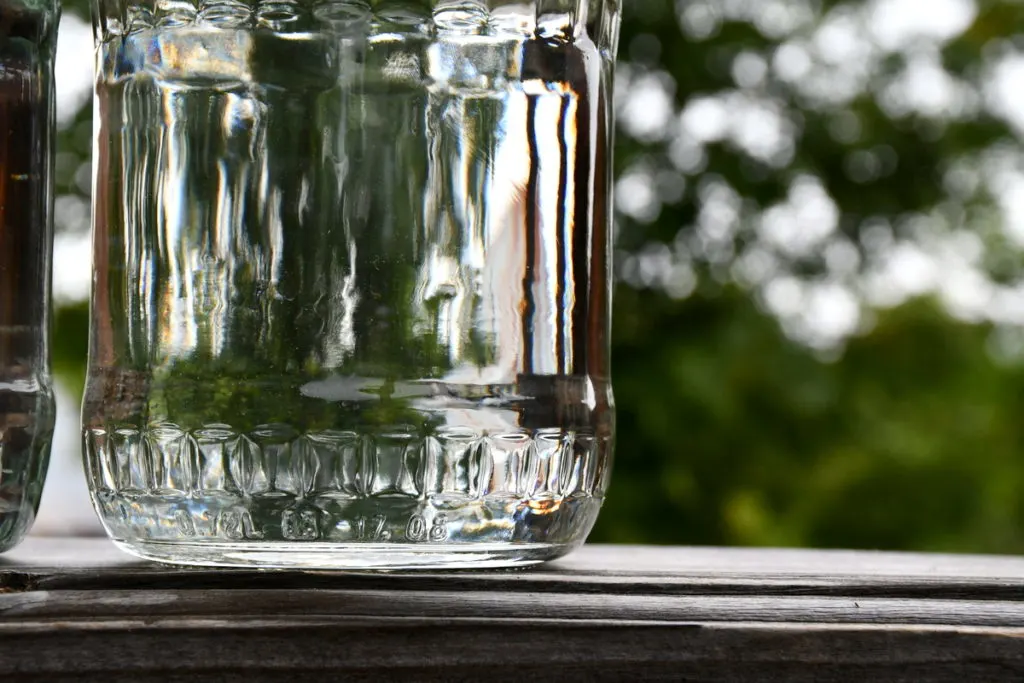
When you get around to storing a few days’ supply of drinking water in canning jars, you’ll already feel like a survivor.
Your emergency water supply will last longer, decades even, plus you can reduce your need for one-time use plastic bottles. Better still is to keep rotating your stock of food and water.
The Safe Way to Can Water
Preserving your precious water should be an easy task, particularly if you already know how to can and preserve your garden crops. If that’s the case, you’ll already have everything you need. There are options for using a water bath canner, or a pressure canner, so you can safely can water for emergency situations.
If you haven’t quite gotten around to learning this self-reliant skill yet, no worries.
These simple instructions to can water are self-explanatory.
The Water Bath Method for Canning Water
I wish I could tell you that canning water is easy.
Truth is, it is simple, though you do have to follow a few steps. At least you don’t have all the fuss like when canning fruit – there’s no need for pitting, cutting, stirring, etc.
Search around for instructions on “how to can water” and you will find differing opinions. This long, at such and such temperature. Put the jars in when the water comes to a simmer, or just before – then bring it up to a full boil. We can discuss this further in a moment, in the meantime don’t forget about how to clean your jars.
Before you get to the actual canning, you’ll have to prepare your jars.
In order to have a good end product, you have to begin with clean jars and lids. After more than a decade of canning, I have seen this over and over to be the key to success.
Take time cleaning the inside and outside of every jar with hot, soapy water. Rinse well and air dry. Do not take a short cut and wipe with a kitchen towel, just don’t.
If you’d rather not wash by hand, you can also use the dishwasher and run them through a cycle. Preferably on their own.
Jars and lids should be clean, but in the case of canning water, it is not necessary that the jars be sterilized.
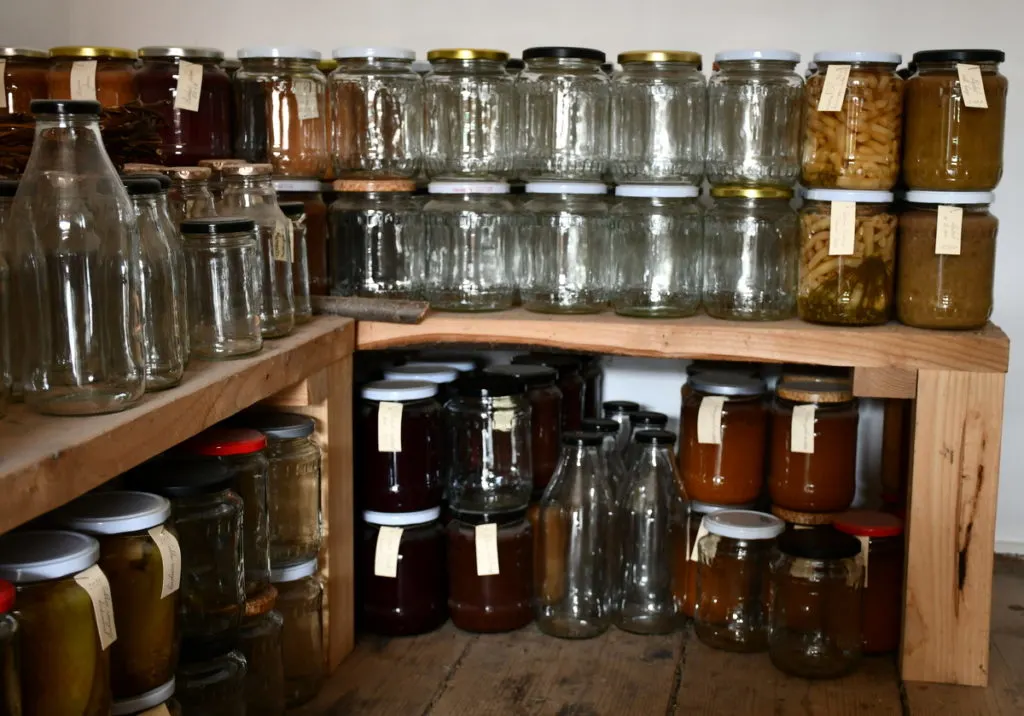
Just be sure to use brand new lids (so they don’t taste like pickles or jam).
Pre-warm Jars Before Canning Water
In order to prevent thermal shock, it’s a good idea to keep your jars warm before placing them in the water bath canner.
A little tip here: place the jars on a towel, rather than a cold countertop, to insulate them from below.
Related reading: 13 Best Places To Find Canning Jars + The One Place You Shouldn’t
What kind of water to can?
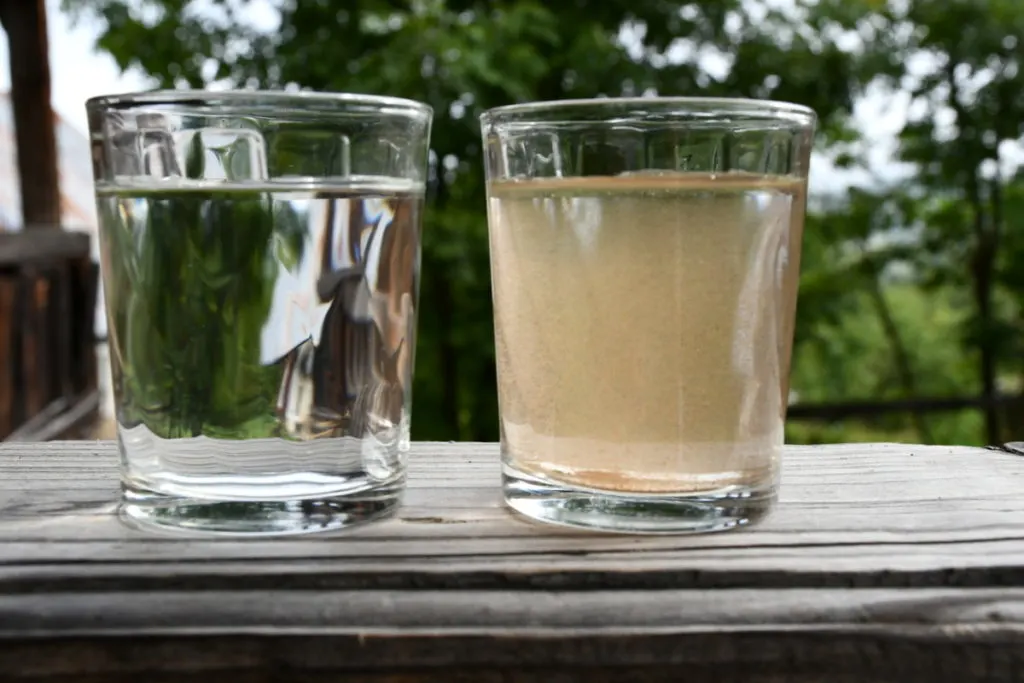
As long as your water is clean and fresh, you can can it. Tap water, well water, reliable bottled water. It’s your choice.
If you can regularly throughout the summer, one way to build up your supply of home-bottled water is to add a jar or two every time you get out your water bath canner (or pressure canner). Jar-by-jar, you’ll easily start to fill in the gaps with drinkable water.
The Process of Canning Water
Start slow and bring the temperature of your water bath canner up to about 180°F, barely simmering.
In another large (impeccably clean) pot, bring your future drinking water to a full boil. Let it bubble for about 5 minutes.
Taking proper canning precautions not to burn yourself, pour water through a stainless steel funnel into each jar. Being sure to leave about 1/2″ headspace.
Secure the lids, tightened lightly by hand (if using 2-piece canning lids), then use a jar lifter to put jars in place in the already hot water bath canner.
Process jars of water for 10 minutes at a full rolling boil if you are canning at an elevation below 1,000 feet.
Set your timer for 15 minutes, for elevations of 1,000 to 6,000 feet.
Only can the purest water in pint or quart-size jars.
There’s no need to label your jars, unless you also happen to store jars of home-brewed brandy – just to prevent confusion.
Pressure Canning Water Method
The case for pressure canning water may or not suit you, though others swear by it. Always do things in the kitchen that are right for your skills and abilities.
If you have a pressure canner in your possession, feel free to use it. But I wouldn’t go out to buy one just for canning water.
That being said, pressure canning is quicker, more energy efficient (especially if you are using propane) and it possibly fits more jars at once (depending on your model).
So, what is it? 8 pounds pressure for 8 minutes? 9 pounds pressure for 10 minutes? 5 pounds for 8 minutes?
There seems to be some confusion – or lack of research/experimentation in the area of canning water.
You can’t really overkill your water as you can always stir some oxygen back into it when all is said and done. However, you don’t need to boil it forever. The best thing you can do, is take an average estimate for your elevation. 8 pounds of pressure for 10 minutes should do the trick in most locations. I know that’s not the most helpful advice, buy hey, it’s just water.
If it doesn’t seal, or doesn’t taste quite right, you can always use it for washing your face or feeding your thirsty plants. Zero-waste.
Don’t forget that your well-prepped pantry might also contain some water purification tablets as well.
One can never be too prepared.
5 Reasons To Can Water
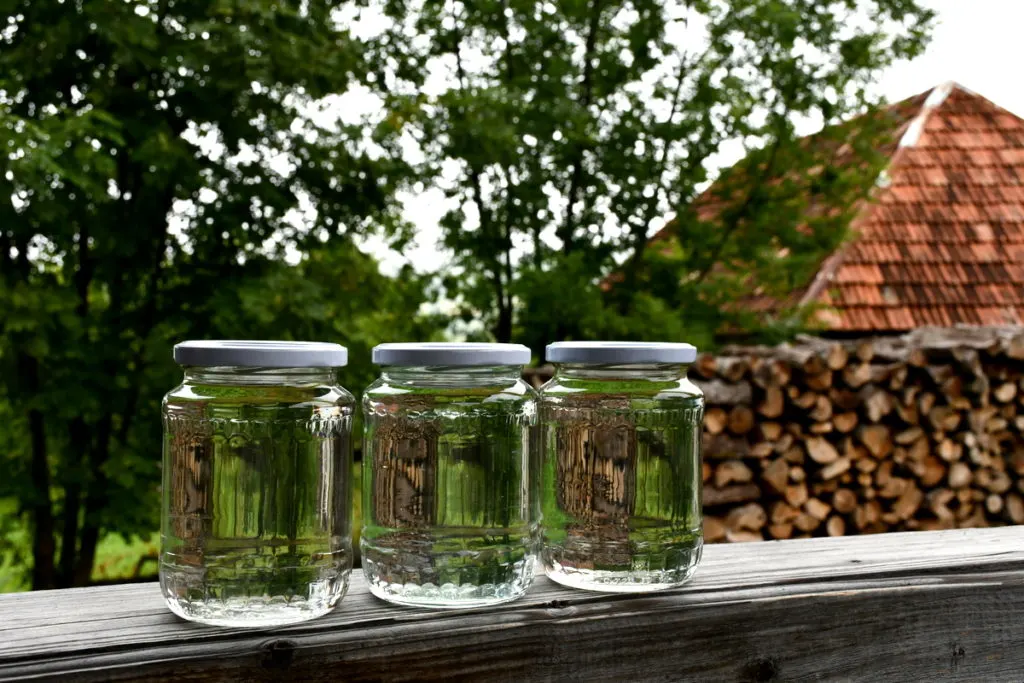
Yes, you can even use it if you are short on water for canning.
We’ve already gone over the bulk of it, so now we’ll gather all the most important reasons to can water in one place, not three.
- Stock your pantry with enough drinking water per person for 3 days – in case of unforeseen emergencies.
- Store even more canned water if you have family, friends, relatives or neighbors that you may need to take care of.
- Bottled water has a relatively short shelf-life and needs to be replaced yearly at best, more often to be on the safe side.
- Speaking of safety – is bottled water truly safe? It may contain arsenic, plastic particles, E. coli or more. Boiling it will get rid of bacteria, but not the other nasty stuff.
- Water, in general, is meant to be consumed fresh. If you leave a cup of water to sit for a few days, you’ll already find the flavor starting to wane. Plus, it may have picked up dust from the air, potential mold spores too, if left uncovered.
To keep your family safe, be sure to keep your drinking water as clean as possible.
Store it in non-plastic containers and always rotate your reserved supply of water.
Simple, yes. Time-consuming, a little bit. Worth the fuss, totally.
As Benjamin Franklin once said, “An ounce of prevention is worth a pound of cure.”
Seeing as how one ounce is about two sips, I’ll let you get back to your plans of canning water.

Get the famous Rural Sprout newsletter delivered to your inbox.
Including Sunday musings from our editor, Tracey, as well as “What’s Up Wednesday” our roundup of what’s in season and new article updates and alerts.

